Author: Matt Del Fiacco
Prior xBmts on yeast pitch rate have produced results surprisingly inconsistent with commonly accepted best practices. For example, blind tasters were unable to distinguish an American Amber pitched with a single vial of WLP090 San Diego Super Yeast from one pitched with an adequately sized starter, and similarly, participants could not reliably tell apart a Festbier pitched with a single pack of Saflager W-34/70 from one fermented with 5 packs. I have to admit, these results felt like a punch in the gut. Like many, I wholeheartedly embraced the idea that yeast pitch rate is one of the most important aspects of brewing beer and acquired all the gear necessary to propagate adequate cell counts. Could it be that this effort, which is backed up by solid science and heaps of anecdote, really isn’t as important as we think?
One common explanation for these results posed by readers had to do with the fact modern yeast labs rely on much more effective procedures than in the past, meaning brewers are using fresher yeast with high viability, thereby reducing the chances of poor results from underpitching. It has also been posited that pitch rate becomes more of a concern as wort OG increases due to more osmotic pressure on the yeast. Interested to see the impact underpitching would have on a style known for its high OG, the time was right to revisit the variable of yeast pitch rate!
| PURPOSE |
To evaluate the differences between a high OG ale fermented with either a single can of Imperial Organic Yeast or an adequately sized yeast starter.
| METHODS |
With winter on its way, I decided to brew one of my favorite styles for this xBmt, a warming Russian Imperial Stout.
Winter Winds
Recipe Details
| Batch Size | Boil Time | IBU | SRM | Est. OG | Est. FG | ABV |
|---|---|---|---|---|---|---|
| 5 gal | 60 min | 76.2 IBUs | 69.5 SRM | 1.108 | 1.030 | 10.5 % |
| Actuals | 1.108 | 1.03 | 10.4 % | |||
Fermentables
| Name | Amount | % |
|---|---|---|
| Pale Ale (Swaen) | 15.875 lbs | 77.44 |
| Oats, Flaked | 2 lbs | 9.76 |
| Chocolate (Crisp) | 1.125 lbs | 5.49 |
| Crystal, DRC® (Simpsons) | 12 oz | 3.66 |
| Roasted Barley (Crisp) | 12 oz | 3.66 |
Hops
| Name | Amount | Time | Use | Form | Alpha % |
|---|---|---|---|---|---|
| Nugget | 49 g | 60 min | Boil | Pellet | 13 |
| Fuggle | 64 g | 30 min | Boil | Pellet | 4.5 |
Yeast
| Name | Lab | Attenuation | Temperature |
|---|---|---|---|
| Darkness (A10) | Imperial Yeast | 73% | 62°F - 72°F |
Notes
| Water Profile: Black Malty in Bru’n Water Spreadsheet |
Download
| Download this recipe's BeerXML file |
I’ve brewed many batches of high OG beer over the years and ultimately settled on using a pitch rate typically associated with hybrid styles– 1 million cells per mL per degree Plato (°P). With an expected OG of 1.110 (~27 °P) and a 4.5 gallon batch size, I would need to pitch about 450 billion cells, which required a two-step starter since each Imperial Organic Yeast can contains approximately 200 billion cells. Relying on my preferred online calculator for proper volumes, I made the first starter of Imperial Organic Yeast A10 Darkness a week ahead of time then stepped it a couple days before brewing.
Because I don’t have the capacity to brew a single 10 gallon batch, I made 2 identical batches, the start times of which I staggered by 20 minutes.
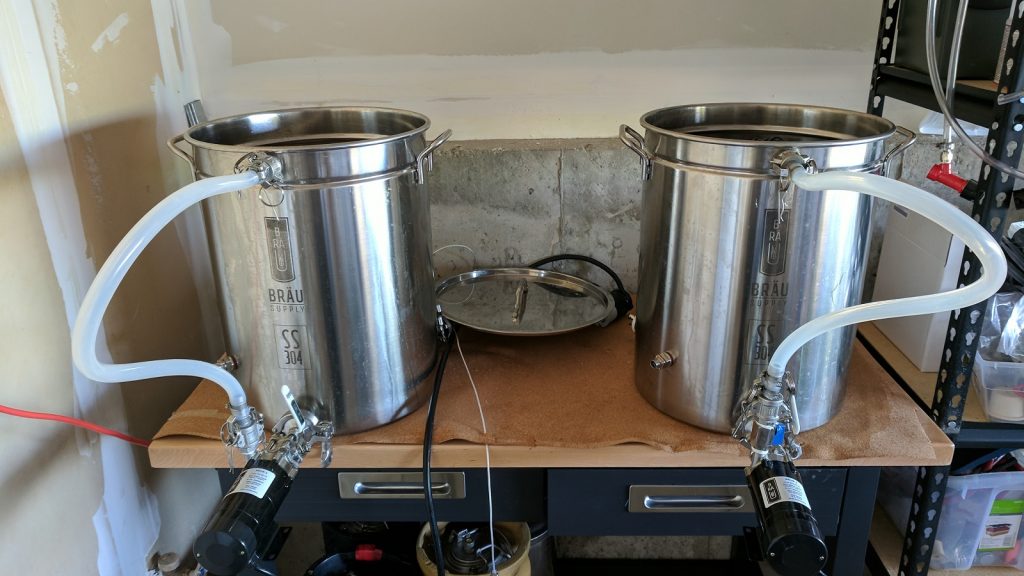
While the water for the first batch heating, I weighed out and milled the grains.
Once the water had reached strike temperature, I added the grains at set each system to recirculate for 90 minutes in order to maintain my desired mash temperature of 154°F/68°C. When each mash was finished, I removed the grains and let them drip into the kettle to reach the same pre-boil volume while the wort was heating. Each wort was boiled for 90 minutes with the hops added at the times stated in the recipe. My garage smelled a bit like stale coffee.
After each boil was complete, the wort was run through my CFC into fermentation kegs.
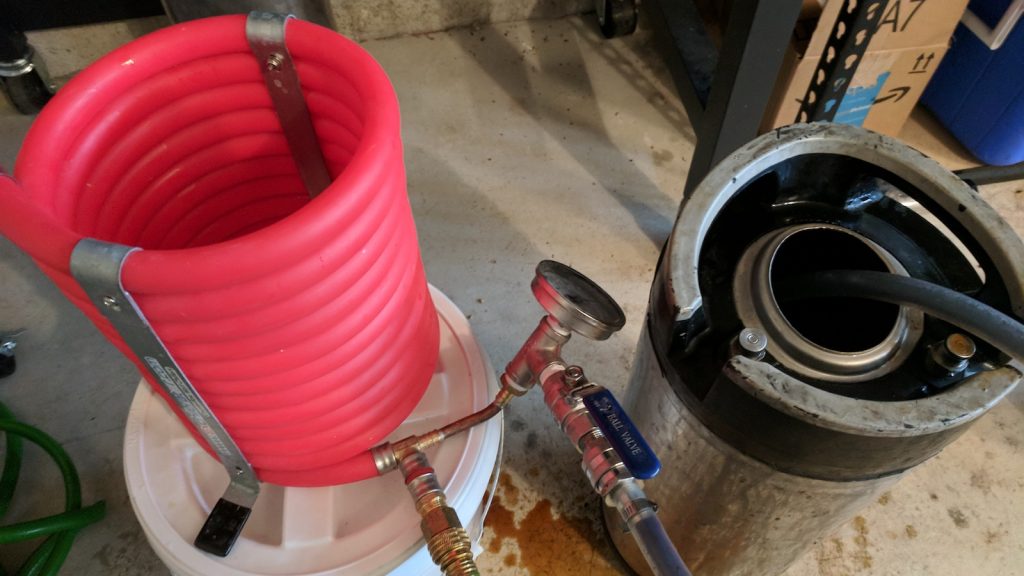
Refractometer measurements confirmed both batches hit the same 27 °P, which is about 1.115 OG, easily the highest gravity wort I’ve ever made using the no sparge method.
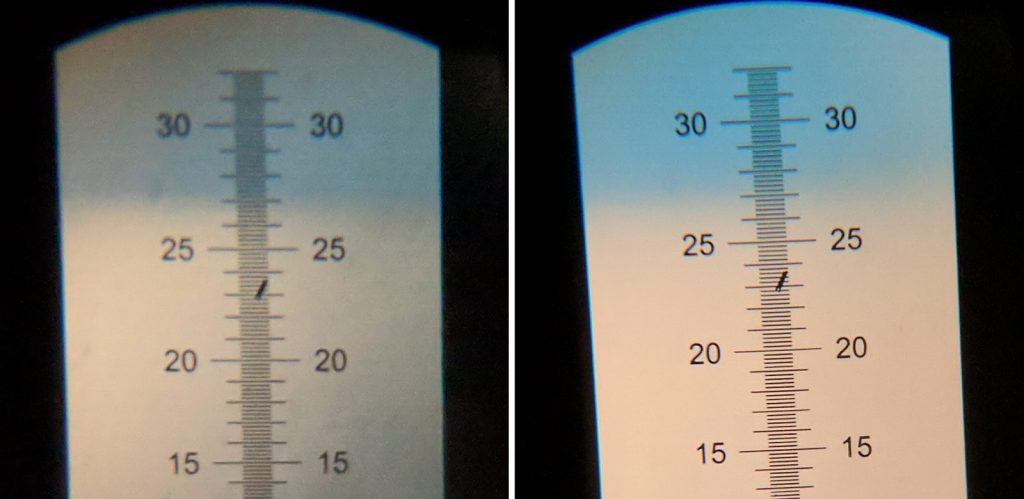
I placed the fermentors in my chamber and gave them a few hours to finish chilling to my desired fermentation temperature of 64°F/18°C. After dosing each wort with pure oxygen, I pitched the yeast starter into one batch while the other received a single can of the same yeast.
With signs of fermentation absent 4 weeks later, I took hydrometer measurements showing a very slight difference in FG between the beers.
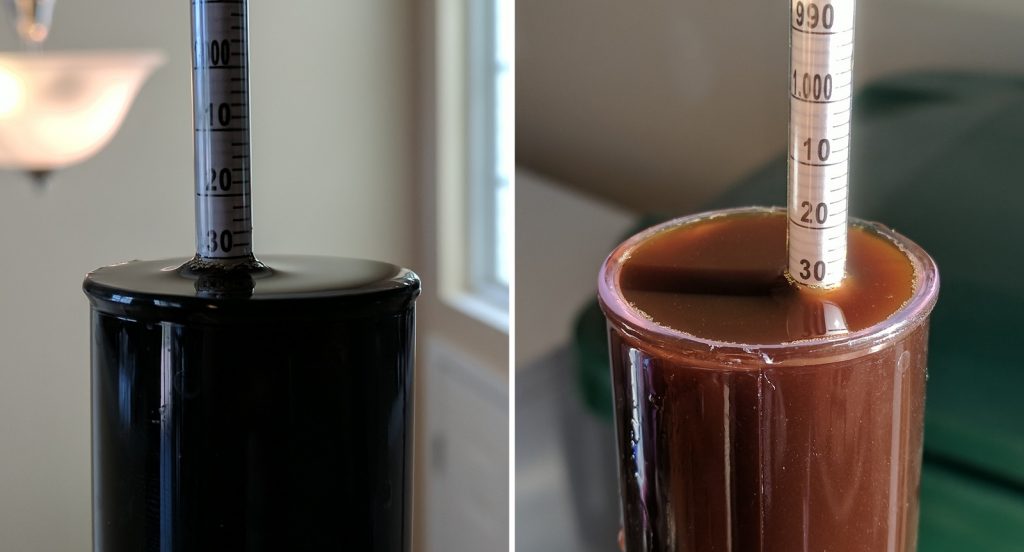
After an overnight cold crash, the beers were transferred via pressure to serving kegs.
The filled kegs were placed in my cool keezer where they were left to carbonate and condition for 2 weeks before it was time to serve them to participants.
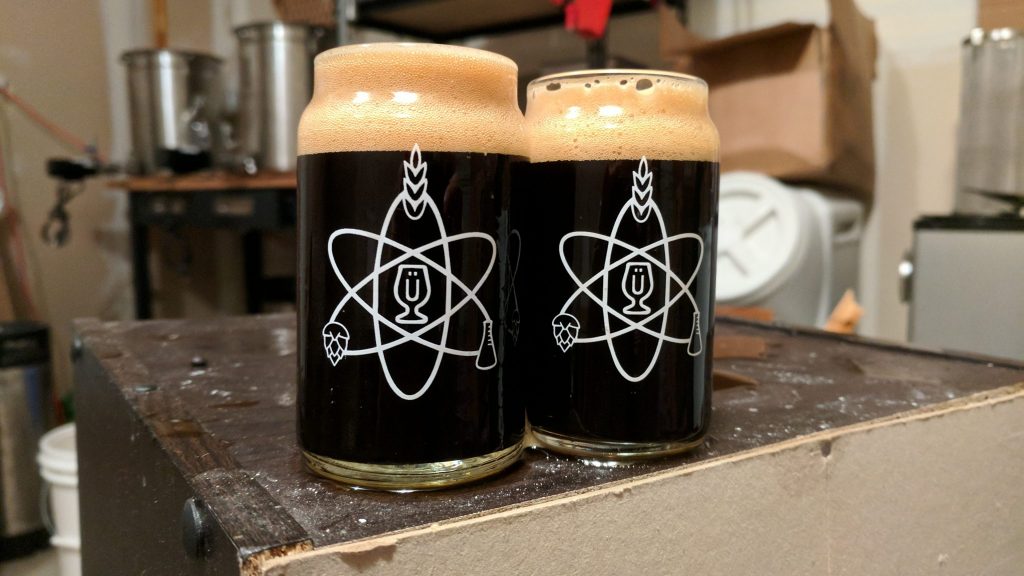
| RESULTS |
A total of 22 people of varying levels of experience participated in this xBmt. Each participant was served 1 sample of the beer pitched with a yeast starter and 2 samples of the beer pitched straight from the package then asked to identify the sample that was unique. Given the sample size, 12 tasters (p<0.05) would have had to select the unique sample to reach statistical significance, though only 10 (p=0.16) made the correct selection, suggesting participants were unable to reliably distinguish a high OG Russian Imperial Stout fermented with the recommended cell count from the same beer that was underpitched.
My Impressions: I’ve long been a believer in the merits of pitching proper amounts of yeast, and I’m particularly firm in this belief when it comes to high gravity beers. I fully expected these beers to be noticeably different, especially since I knew the variable. To my surprise, I was only correct on 2 out of the 4 triangle tests I attempted, and I’d be lying if I said those weren’t just good guesses. Both beers were wonderfully roasty with a medium body and prominent dark fruit flavors, which I’d wager came from the Double Roasted Crystal malt. I didn’t detect any off-flavors in either and look forward to trying this beer again with some age on it.
| DISCUSSION |
Propagating yeast in a starter is viewed as a necessary part of the brewing process by many, as it generally leads to quicker start to fermentation that reduces the risk of off-flavors. I’ve remained firmly in this camp despite non-significant results from previous xBmts on the topics– it just makes sense that pitching more yeast is better, particularly for beers with a higher OG where osmotic pressure may be a negative influence. My surprise with the fact tasters in this xBmt were unable to reliably tell apart a high OG Russian Imperial Stout fermented with a single pack of yeast from one fermented with an adequately sized starter was undoubtedly influenced by this belief. Since the direct pitched yeast still had to progress through the growth phase of fermentation, I expected it to develop more esters than the beer pitched with a starter, there by making them easily distinguishable. Based on the prevailing science, this really should have been the case, and while it’s possible chemical differences did exist, it wasn’t dramatic enough for participants in this xBmt to perceive.
In pondering possible explanations for these results, it crossed my mind that the impact of pitch rate might be yeast strain dependent, sort of like what we seem to be finding with lager fermentation temperature. Imperial Organic’s A10 Darkness is a relatively clean yeast compared to some of the characterful strains out there, and it seems plausible that yeasts used to make beers higher in phenols and esters would be more sensitive to pitch rate. It’s also possible my decision to dose both worts with pure oxygen prior to pitching served to minimize the impact of pitch rate, though this feels a bit sketchy based on the non-significant findings from prior oxygenation xBmts. For now, I’ll continue making properly sized yeast starters for most of the beers I make, if only to be consistent, as I’m not quite ready to close the case-file on this one just yet.
If you have thoughts about this xBmt, please feel free to share in the comments section below!
Support Brülosophy In Style!
All designs are available in various colors and sizes on Amazon!
Follow Brülosophy on:
FACEBOOK | TWITTER | INSTAGRAM
If you enjoy this stuff and feel compelled to support Brulosophy.com, please check out the Support Us page for details on how you can very easily do so. Thanks!


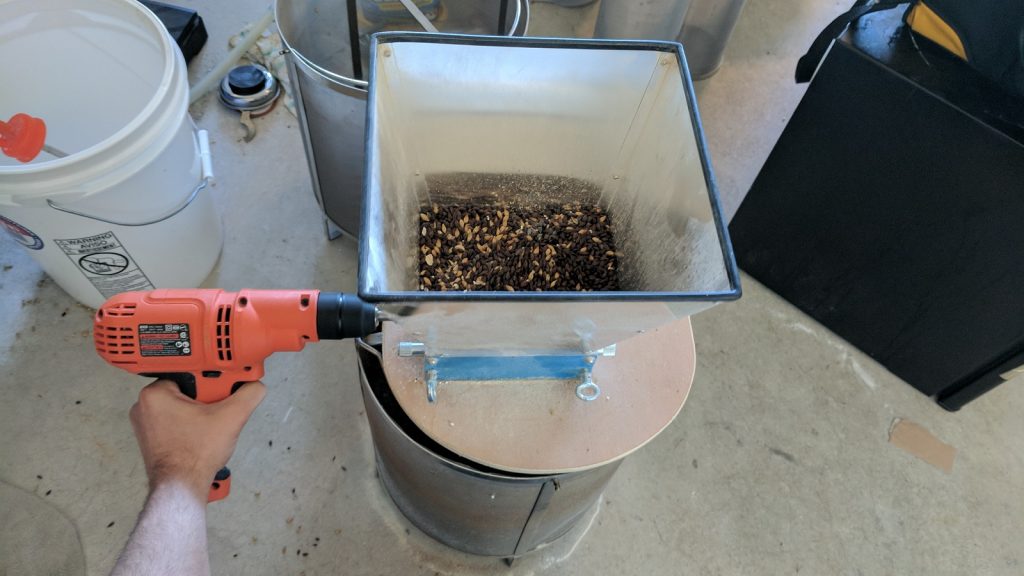
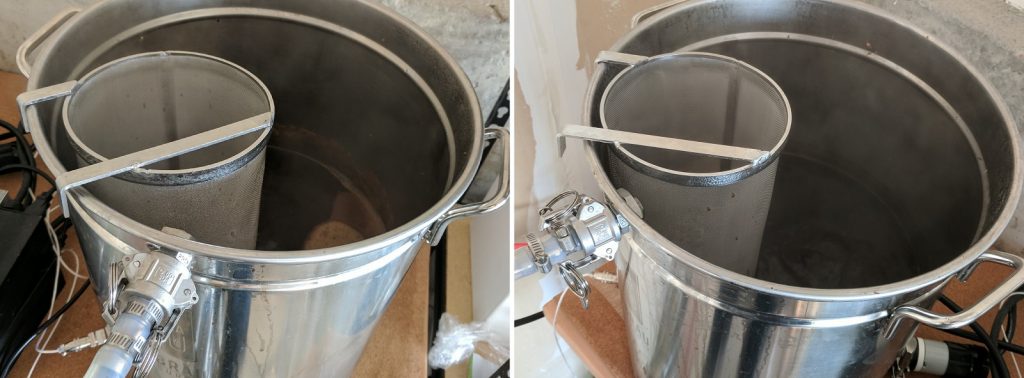
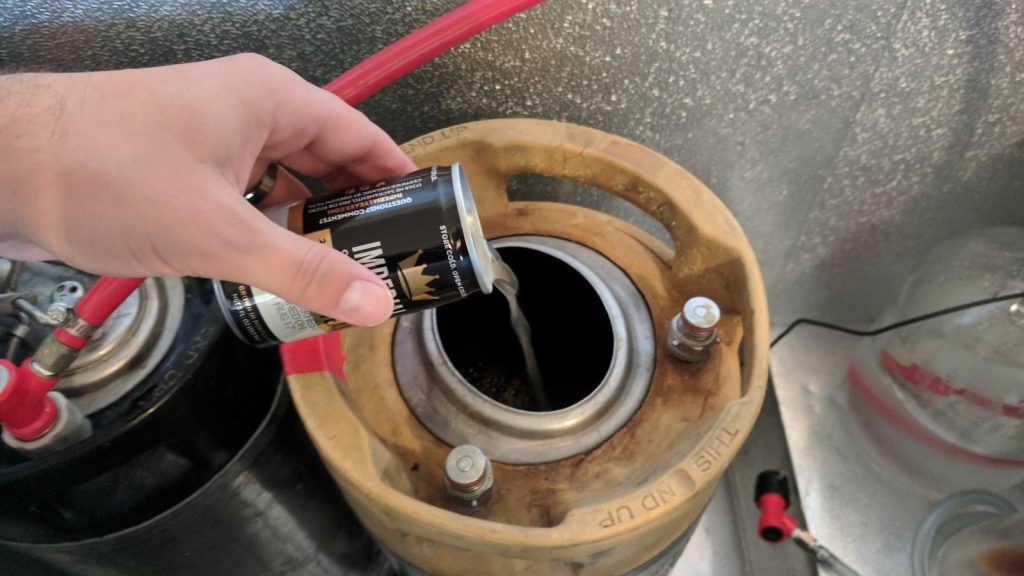
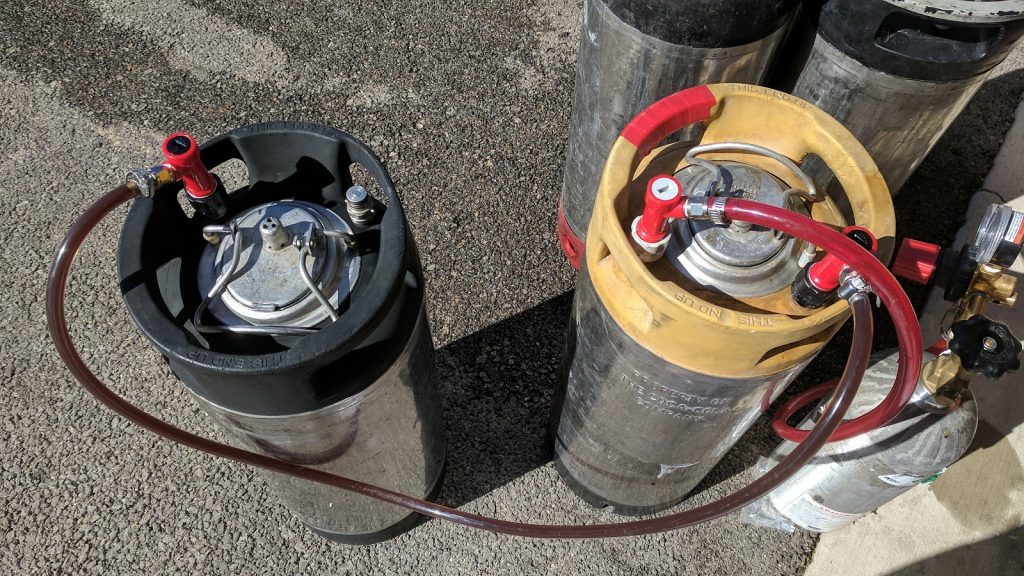










48 thoughts on “Yeast Pitch Rate: Direct Pitch vs. Yeast Starter In An American Stout | exBEERiment Results”
Very interesting result, but man I wish this XBMT was done without oxygen. I pretty sure the results would have been different.
The way I see this is – either pitch a calculated amount of yeast or underpitch but add oxygen. Underpitching without oxygen is something that really needs testing.
I think I’m leaning this way as well actually, I’m planning on repeating this without the oxygen sometime in the future.
This style would be the least likely to show a difference. A big stout hides all mistakes.
I’m not so sure of that, it’s kind of a saying we hear all the time, but I’m not sure it’s true. Yeah, an imperial stout tends to have a lot going on, but they’re also (I believe) more susceptible to problems. Higher rates of roast and crystal malt means more prone to oxidation, higher osmotic pressure means more yeast stress.
I’m definitely looking forward to seeing this experiment done again though, with a few of the variables changed.
“This style would be the least likely to show a difference. A big stout hides all mistakes.”
And another would say a hoppy beer does. Yet another would clam a beer to be too malty. Others actually called out for big stouts and porters.
It goes without fail – no matter which beer is used – SOMEONE will feel it should have been another beer. And, really, that’s ok. It’s part of the fun.
FWIW – I find making large stouts to not be as easy as some claim. I drink beer all over and think people make very bad ones more often then very good ones. Sure, some of the character of the complex malt bill may hide some minor aspects, if there were any, of say fermentation esters, but then again, people do make large stouts as well.
read twice, no reference on one of the beers lagging… any visible diffs in fermentation?
It’s a little hard to tell fermenting in the kegs, but I did not blowoff tube activity sooner with the higher pitching rate
I’m wondering if you would have seen different results if the beer had had more time to develop.I appreciate that bottling would be a pain for the sort of quantities you need for XBMTs, but in my experience the longer these strong beers are left, the more interesting they become. I dip into my R.I.S. brewed August 2015 every now and again and each time can easily convince myself that it’s different and better from the previous tasting!
I definitely want to revisit this beer later on, but it won’t be as an experiment, not quite enough of it left for that. But I’ll be interested to see how it develops, which may be the catalyst for a repeat of this one with more time on it.
I’m part of a homebrew club and have definitely sampled beers that were under pitched, they had esters that masked the appropriate flavours in an unpleasant way. I remember having several imperial stout that were cloyingly sweet. Is it possible some just like the extreme sweetness?
Definitely possible! Though I would think that if that were the case, the beer that had a bigger pitch wouldn’t have had that sweetness.
I’d guess that was more likely a by product of under attenuating than ester production?
“Is it possible some just like the extreme sweetness?”
Sure, but realize this experiment — like most of these — is not designed to test preference, it’s designed to test discrimination. That is, is there a detectable difference between the beers.
the small FG difference could be due to the diluting effect of the starter if it was at least 1L in size
Did you pitch the whole starter or decant off the liquid and just pitch the yeast?
Hey Ben!
I decant my starters
OK even more interesting. I think Brulosophy brewers have now done enough pitching rate experiments to seriously question the theory that underpitching makes yeast more expressive.
One thing we can rule out is the daft idea that underpitching is stressful to yeast. A more sensible theory is that more esters are produced in the growth phase when yeast are actively budding. However, budding doesn’t stop when the growth phase ends – it’s just that death rate exceeds birth rate and the population goes into decline. The yeast carry on dividing and producing esters as long as there’s still fermentable carbohydrates in the wort, until the end of fermentation.
I am beginning to wonder it pitching rate is irrelevant in well oxygenated wort.
If you pitched the whole starter, both beers would have all the esters associated with the growth phase. The only advantage of preparing a starter that will be pitched whole is that fermentation gets a headstart, which may help ward off infection. If your sanitation is good, there isn’t much point making starters that are pitched whole.
You have 2 of those Unibrau systems? You fully have the capacity for a single 10 gallon batch then unless I’m missing something.
What is this in reference to exactly? Sorry if I’m missing something, I make two 5 gallon batches on brew day.
I posted same on Facebook… easier to converse lol. One 10 gallon would be easier, no? Run the two systems as one. grain and most of the water in one, rest of the water in the other. Recirc the entire time using the non grain kettle to maintain temp.
When it’s done, half the volume in each, run 2 consecutive boils.
Just saves a step.
What was the manufactured date on the single pitch can? I noticed you didnt mention that. Most of the yeast at my local homebrew store is usually a month old if not older, so the viability is never 100%. Therefore, I always make a starter to hit my target pitch rate.
August 1st of 2017, and this was done in early September, so conventional knowledge would place us at around 160 billion cells for the can pitch.
More yeast certainly isn’t always better – if you go over the top you’ll miss out on the growth phase of the yeast which could produce a very one dimensional beer in some styles. Also big overpitches increase the likelihood of autolysis, which can ruin an otherwise good beer.
I thought Imperial Yeast cans had several times the Yeast cell count of Wy’East and White Labs Yeast packs…? And if so, isn’t that like you already have a built-in Yeast starter…? This was my recollection.
They have about 200 billion cells, twice what is in WYeast and White Labs, but still far below an “appropriate” pitching rate for this beer.
Your recipe claims Darkness but the text contains Tartan 2x. Guessing Tartan but which was it? 😉
Great catch! Copy paste error, fixed it, thank you! It was Darkness.
I have long been convinced that viability and oxygen are more important than pitch rate. Your xbrmts seem to give credence to my position. Having said that I generally make a starter a day or two before brew day, just to make sure I am pitching healthy viable yeast. Great xbrmt.
I’m in the same camp. I make starters (and vitality starters) all the time, just as a best practice.
I have a question related to this. What is it that stresses the yeast when you under pitch. You referenced osmotic pressure. Is this how the yeast is stressed? It seems to me that if you have good sanitation and properly chill the wort before pitching, that the yeast will grow to the appropriate size on its own.
I do use a starter and like the fast fermentation results, I just wonder about the science behind it.
For what it’s worth, I kinda wish you hadn’t done a dose of pure oxygen on these beers. I have oxygen, so I can do that, but I don’t usually use the oxygen because (1) no xBmt says it improves the beer (2) and it’s a hassle to sanitize and clean the stone on brew day. xBmts are most helpful to me when they assume a relatively simple approach to brewing that uses the minimum of equipment, especially equipment that needs cleaning. In any event, not everyone has oxygen; I wouldn’t if brulosophy had existed at the time I bought my O2 system.
However, in a beer this large, given the variable under test and the theoretical relationship between oxygen and yeast growth and health, the oxygen may have offset the effects of a low pitch rate.
That said, thanks for this one. In my upcoming Barleywine I will probably fire some 02 in the wort and pitch directly from a can of Imperial Organic.
” I wouldn’t if brulosophy had existed at the time I bought my O2 system.”
Truer words were never spoken. I think about a lot of the things I have for my current brew setups and what I would do today if starting from scratch knowing what I’ve learned from brewing AND from Brulosophy. Cheers! Great read.
Was there a difference in time with regard to reaching FG between the two batches? By pitching big starters and O2, my 10% plus beers are done in 2 weeks. regular strength beers (4-7%) are done in a week.
could the difference be , it just doesn’t really matter with this yeast. It didn’t matter with 34/70 either. Both of these yeasts are supposed to have 200 bil cells. i would like to see
a smack pack and/or vial (each have 100 bil cells) vs a starter with an IPA.
It could be! It could also be, in the same vein of thought, something dependent on yeast strain. Maybe in a Belgian yeast, it would be different.
I believe you guys are right on when you say it could be strain dependent. I listened to a podcast on Basic Brewing radio (episode 8/20/15) where James interviewed someone who did a pitch rate exp with Hefe yeast and got significant results. He brew three samples. I believe 1 was 50% under pitched, 1 was 25% under, the last rt on target. Or something to that effect. I remember the tasters preferring the 25% under pitched beer.
I would bet the reason curtain strains have become so popular and widely used is they are more forgiving of things like pitch rate, temp, and pressure. Over time the less tolerant strains have been weeded out from brewing unless you desire that curtain characteristic like a hefe yeast. This is why I love it when Brewers use 2 completely different strains with the same wort. They are so interesting to compare. Great read, cheers 🍻
I would also be interested in smack pack (Wyeast or WLP) pitch given the lower cell count. I understand that Mr. Malty or whatever says 450 bn cells is adequate but maybe Imperial’s direct pitch (which doubles what many of us were using before switching to starters) of 200 bn cells is actually not underpitching at all, even for this big beer.
My bet is that a direct pitched smack pack would take substantially longer to get going (direct experience) and/or may crap out before reaching attenuation.
“under” is a relative value. I am wondering if what we consider “under” is in fact perfectly fine. A follow up could be pitching something that is quite a bit lower. Perhaps 1/3 of a can
“Water Profile: Black Malty in Bru’n Water Spreadsheet”
‘Black malty’ is water profile found in v3.x of the Bru’n Water spreadsheets.
Kinda surprising Brulosophy doesn’t use the latest ‘supporter’ version (4.x) of Martin’s shareware seeing how they produce different results.
Honestly, Darkness is a BEAST. I threw 12 gallons of a 1.190 wort at a 4L starter…did not bat an eye and was done with primary in 5 days (I let it go for 2 weeks before racking off into the bourbon barrel).
Nice write up. Like some other here, I wonder how different these beers would be 5 or 10 months from now. Regardless, I’m still going to overpitch my big beers and lagers and underpitch my hefes.
Interesting and informative, as always.
I have a few questions about your experience fermenting in Corny kegs:
1) How much headspace do you leave to ensure the krausen doesn’t clog the poppit valve in gas QD and, hence, your blowoff line?
2) How much of your liquid dip tube did you cut off to ensure you don’t clog your dip tube / poppit / QD when transferring via pressure to serving kegs?
I want to start fermenting in kegs and transferring via pressure to eliminate O2 exposure but I’ve been concerned about these 2 issues, especially with hoppy IPAs with thick trub layer. Thanks
Could the time the fermented beer sits on the yeast cake be making the difference here and the esters are scavanged by the yeast before it goes dormant in both cases ?
Will A, If you are ever in San Diego White Labs tasting room is where you need to go. They serve flights all made with the same wort but 4 different yeasts. A very interesting tasting experience.
Great Xbmt – I personally geek-out on making starters if only for the simple reason of being hypnotized by those swirling little bastards and having my kitchen smell like beer bread!
That being said, I agree with “smschaf” in regards to length of time to reach FG. Do you think that pitching a greater quantity of yeast and adding O2 helps the fermentation achieve “drinkable” status more quickly?
Say, 2 weeks as opposed to 4?
Hmmmmm…. maybe time for extremes with this one? Maybe only 50B in one and something like 400-500B for a control; and maybe even a 3rd batch with 800B+.
I’m a yeast rinser and long storage keeper. The London III I just used for my holiday stout is on its 4th gen and had been sitting in the fridge since June (for a brew day of Oct. 8th). I’d love to get 200B fresh from a can, but I’m super cheap. 😉
I like these experiments; they’ve helped me refine my process. I only use dry yeast straight into the wort. I choose which yeast according to style. If it’s a big beer, I’ll spend an extra $2.50 and sprinkle in two. I follow the label for pitching temp and fermentation temp. Basically, I’ve never noticed any flavors other than what the yeast is supposed to exhibit. A positive from this is that blow-off is something I never even come close to experiencing.